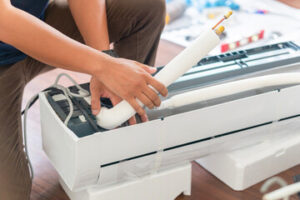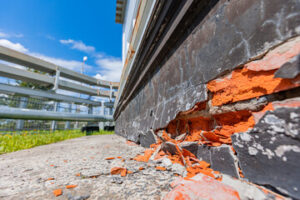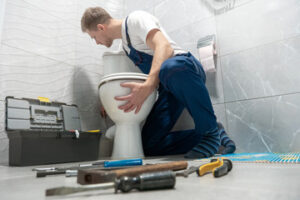Landscapers use a wide range of skills and tools to manipulate nature to achieve aesthetic and practical goals. Landscaping includes everything from lawn care to designing and installing gardens, parks and other public spaces.

To create your dream garden, begin with a site analysis. Walk around your yard, taking note of what you like and don’t like. Make a list of your needs and desires, and draw bubble diagrams in the spaces you wish to change. Visit https://www.primecutlawnky.com/ to learn more.
Landscape design involves shaping outdoor areas to make them more appealing and functional. This can include adding plants, creating walkways, and even installing water elements. Landscape designers use their knowledge of horticulture, soil science, architecture, and art to create unique outdoor spaces. They balance site visits, client meetings, and presentations with researching, drafting plans, and overseeing the construction process.
Color, line, form, and texture are all important elements in landscaping. Color is the most obvious element, and it can be used in a variety of ways to draw attention to a certain area or feature. For example, using a combination of warm and cool colors in the same flower arrangement can add contrast and visual interest. Form refers to the shape and structure of plant parts, from the stiffly upright branches of Lombardy poplar trees to the drooping quality of weeping willows. Texture is the feel or roughness of a surface, and landscapers often use different textures to create interest.
Form is the arrangement of plant parts to create a balanced whole. This can be achieved with symmetry or asymmetry. Symmetrical balance has an obvious axis with equal parts on each side. Asymmetrical balance is more informal, and it can be created by arranging different types of plants or structures in groups on either side of a less-obvious axis.
Another aspect of form is scale. Scale is the size relationship between different parts of the landscape, such as buildings and plants. A landscape that is out of scale can look awkward and unfinished. To avoid this, landscapers must account for the mature height and spread of plants when planning a space.
Landscapers also consider the effect of a landscape on the surrounding environment. For example, they may choose plants that are drought-tolerant to reduce water usage. They may also choose species that have natural resistance to pests to minimize the need for chemical treatment.
Regenerative landscape design (RLD) is an approach to landscape that promotes human health and well-being by integrating social and ecological systems. RLD includes a focus on co-design, which encourages collaboration between stakeholders to identify and address complex environmental issues.
Plant Selection
Plant selection is one of the most important parts of landscape design. It affects how quickly your greenery grows, how long it lasts, and how easy it is to maintain. It’s also important to consider how your plants will complement other features in your garden, such as patios, pathways, and decorative stone elements.
The best way to determine which plant types will thrive in your yard is to look at the climate and soil conditions of your area. Every region has a unique micro-climate, and selecting the right plants for your climate will ensure healthy growth and reduce maintenance requirements. It’s also important to consider your soil quality and whether it’s prone to certain diseases, such as nematodes and Texas root rot.
When choosing shrubs, flowers, or trees, you’ll want to choose botanical species that attract pollinators and provide food for native wildlife. This will contribute to the biodiversity of your neighborhood and help keep local ecosystems healthy. Native plants are also often the best choice, since they’ve co-evolved with your environment and can better adapt to climatic changes.
Form and color are other important factors to consider when selecting vegetation. Plants with different shapes add depth to your garden and are more visually appealing. You’ll also want to think about the color of leaves, fruit, or bark to add interest to your landscape. Deciduous plants tend to change form with the seasons, while evergreens maintain a consistent shape throughout the year.
You should also consider how much sunlight your property receives on a daily basis and what areas are shaded by buildings or existing trees. This information will help you determine how much sun or shade your plants require and the amount of light and moisture they can tolerate. It’s also important to know if your soil is susceptible to disease, as this will limit your choices of plants.
Finally, it’s important to decide if you’d like to have a formal or natural landscape. For example, you may want to include trimmed hedges and a well-groomed garden for a more manicured look, while a more natural landscape can be made up of wildflowers and vines on trellises.
Hardscaping
Although often used interchangeably, landscaping and hardscaping are two different things. Landscaping uses natural flora to add beauty and functionality to outdoor spaces, while hardscaping utilizes non-living materials like stone and concrete to enhance the design of a garden or lawn area.
Examples of hardscaping include fences, walkways, patios and retaining walls. It can also incorporate water features, fire pits, decks, garden beds and outdoor lighting.
While hardscaping is less environmentally friendly than softscaping, it does have some benefits. For example, paving stones help to reduce erosion and maintain soil structure, which prevents weed growth and provides support for plants. It also helps to conserve water by reducing the amount of irrigated grass. Another benefit is that it can create shade in hot climates, allowing homeowners to enjoy their gardens even in the heat of summer.
The environmental impact of hardscaping depends on the materials used and how they are installed. For example, a paved surface made of flagstones can be more eco-friendly than a standard turf lawn because it requires much less watering and upkeep. It is also possible to install a gravel path or garden bed that will reduce the amount of fertilizer and pesticides used in the yard.
In addition, choosing a green hardscape design is important. For example, if you are using pavers, look for those with a high solar reflectivity index (SRI). These are designed to minimize the absorption of sunlight and will not become too hot underfoot during the day. Other options include using wood that has been reclaimed or purchasing from a company that uses recycled materials in their products.
The primary purpose of hardscaping is to provide functional and attractive areas for outdoor activities such as walking, entertaining or relaxing. It can increase the aesthetics and value of a property, as well as make it easier for people with mobility challenges to move around outdoors. For example, a flat paved stone patio is much more useful than a lumpy patch of grass and can make it safer for children and elderly visitors to navigate the grounds.
Lighting
Lighting accentuates outdoor design elements, elevates walkway visibility, and sets a tone for your property. Landscape lights illuminate sidewalks for safety at night, but they also create ambiance and elevate other features like fountains, waterfalls, ponds, and more.
The best lighting plans logically connect different areas of the yard with paths, stepping stones, lawn, repetition and alternation of plants or colors, and light. This provides rhythm and structure to the garden and guides visitors from front to back.
Hinkley landscape lighting comes in a variety of styles and sizes. Whether it’s accent, path or spread or post and bollard landscape lighting, they have products that will fit your needs. Often, these landscape lights come on a transformer and require a licensed electrician to play with line voltage.








